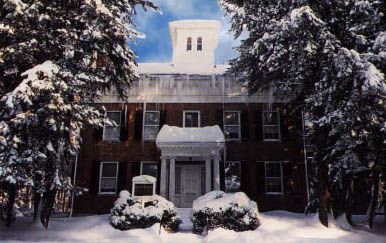Diversity of Life: The Five Kingdoms, by Lynn Margulis, Enslow Publishers, 1992, 80 pp. Details of the major features, members, and history of the five kingdoms. Provides easy background reading for the five-kingdoms poster classroom activities (see Science for Teachers and Students, next column). Illustrated by black-and-white photographs and drawings. Cloth, $16.95. (Seeking new publisher.)
Biospheres: From Earth to Space, by Dorion Sagan and Lynn Margulis, Enslow Publishers, 1992, 96 pp. Concepts of ecosystem ecology in the context of people colonizing space. Illustrated by black-and-white photographs and drawings. Cloth, $16.95. (Seeking new publisher.)
Science for Teachers and Students
An Introduction to the Carbon Cycle: What Happens to Trash and Garbage? by Lynn Margulis and colleagues, 2001. Classroom teaching activities for middle- and high-school science. Boxed unit includes 44-page teacher's guide, picture packet for photosort activities, carbon cycle poster, 4-page guide to the carbon cycle poster, and 16-minute video of live microscopic mold and mushroom development. NeoSci Corporation.
Five Kingdoms Poster, by Lynn Margulis, illustrated by Christie Lyons based on design by Dorion Sagan, Ward's, 1992. Set includes a teacher's guide to the poster and a guide to classroom activities. Complete set (cat. #33 W 0024), $24.95; poster only (cat. #33 W 0025), $10.95. Ward's.
Five Kingdoms CD-ROM, A digital version of the classic work of Lynn Margulis & Karlene Schwartz. Provides detailed, multimedia information on the five kingdoms with over 500 drawings, photographs and video clips. All 92 living phyla are thoroughly described through graphic images complemented by explanatory text. A unique, interactive habitat key allows your students to quickly discover where each of the referenced organisms live. Your students can also reference supporting information by accessing the hyperlinked, illustrated glossary containing over 700 entries. $99.95. NeoSci Corporation
Diversity of Life on Earth: The Illustrated Five Kingdoms, by Lynn Margulis, Karlene V. Schwartz, and Michael Dolan; illustrated by Christie Lyons and Kathryn Delisle; Jones and Bartlett, 1999. An introduction to all the major groups of organisms -both familiar and less well-known plants, animals, fungi, protoctists, and bacteria- in their natural habitats. Includes classification systems, life histories, and drawings of microbes in nature. Unmarked full-page illustrations are accompanied by reduced, labeled versions showing communities of live beings in their ecological context. Paper (spiral-bound), $35.00. Jones and Bartlett.
Living Sands: Mapping Time and Space with Forams, by Lynn Margulis and Lois Brynes, 2000. The importance of understanding the geological scale using fossil protists in a set of 10 classroom activities. For introductory college and high school science teachers (one to four classroom periods). Unit includes foram-rich sand samples, photomicrographs, teacher's guide, maps, spiral-bound student workbook, and 8-minute video on deep-sea drilling for foram collection and multiple fission in foram cell reproduction. $99.95. NeoSci Corporation (cat. #10-20-2213).
Slides
(35 mm color projection slides)
Introduction to the Five Kingdoms, by Lynn Margulis and Karlene V. Schwartz, Ward's, 1987, 20 slides. Set, with manual (cat. #170 W 0104), $37.95. Complete set (this introduction, together with each of the five kingdom slide sets listed below), 200 slides with teacher's manual (cat. #170 W 0110), $340.00. Ward's.
Monera, by Lynn Margulis and Karlene V. Schwartz, Ward's, 1987, 40 slides. Examples of prokaryotic cell structure, live cyanobacteria, spores of bacilli, Gram-stained bacteria, natural bacterial communities, and other important bacterial phenomena. No cartoons or computer graphics; photos or electron micrographs of live archaebacteria and eubacteria. Set, with brief teacher's manual, $75.00. Ward's (cat. #170 W 0105).
Protoctista, by Lynn Margulis and Karlene V. Schwartz, Ward's, 1988, 40 slides. A photographic example of each major group (phylum) of algae, amebas, slime molds, chytridio-mycotes, slime nets, ciliates, and the many other eukaryotic microbes and their descendants. Set, with brief teacher's manual, $75.00. Ward's (cat. #170 W 0106).
Fungi, by Lynn Margulis and Karlene V. Schwartz, Ward's, 1987, 20 slides. Photographs of ascomycotes, basidiomycotes, lichens, and fungal mating, including molds, yeasts, and mushrooms. Guide explains basics of fungal life cycles. Set, with brief teacher's manual, $37.95. Ward's (cat. #170 W 0107).
Animals, by Lynn Margulis and Karlene V. Schwartz, Ward's, 1988, 40 slides. Developing from embryos, themselves from egg and sperm. One photograph each of more than 30 animal phyla in their natural habitat (most are marine). Set, with brief teacher's manual, $75.00. Ward's (cat. #170 W 0109).
Plants, by Lynn Margulis and Karlene V. Schwartz, Ward's, 1987, 40 slides. Plant definition and photographs of a plant embryo, a bryophyte, and each major kind of tracheophyte, including horsetails, ferns, lycopods, Welwitschia (Gnetales), gymnosperms, and angiosperms shown in their natural surroundings. Set, with brief teacher's manual, $75.00. Ward's (cat. #170 W 0108).
Videos
(NS = no sound; M = music only)
Dreaming the Dream: Southeast Alaska, with Jonathan White, 1989, 10 min., color. $25.00. Sciencewriters.
Life Histories of Common Fungi, 2000, 18 min., color, NS. $39.95. Ward's (cat. #193 W 1200 VHS). NeoSci Corporation.
Our Living Planet Earth, Ward's, 1993. Part I: Origins of Life. Part II: Five Kingdoms of Life. Part III: People Are . . . Mammals. 30 min. total, color. Complete set (cat. #193 Y 1204 VHS), $67.00; Part I only (cat. #193 Y 1201 VHS), $24.95; Part II only (cat. #193 Y 1202 VHS), $24.95; Part III only (cat. #193 Y 1203 VHS), $24.95. Ward's.
Gaia to Microcosm: Planetary Life, Kendall/Hunt Publishing, 1994. Four short videos: From Bacteria to Biosphere, Photo-synthetic Bacteria- Red Sunlight Transformers, Spirosymplokos deltaeiberi- Microbial Mats and Mud Puddles, and Ophrydium versatile- What Is an Individual? Includes printed narrative keyed to video by small numbers on the screen. 35 min. total, color, M. $93.95 $25.00. Sciencewriters.
Looking at Microbes: Introduction to Microbiology Laboratory for Students, 1997. Two sets of short videos. Volume I on staining, pH measurement, sterile technique, using the microscope, and other standard microbiological practices. Volume II on microbial motility, bacterial spores, protists and bacterial life in cow's rumen. Color, M. Student guide $6.00; inquire for video price. Jones and Bartlett.
Microcosmos Videos, 1999. Two volumes. Volume I: Cells and Reproduction: 1. Cell Motility: Morphogenetic movement, bacterial flagella rotation, phototaxis, magnetotaxis, eukaryotic cell motility- actin- and tubulin-based. 2. Mitosis: Plant and animal tissue cell divisions in which chromosomes, spindles, and mitochondria are seen clearly. (No animation or cartoons.) 3. Sex or Reproduction?: Sex is very different from reproduction. Sex lives of Trichonympha, Paramecium, Chlamydomonas, and others entirely separate from reproduction, contrasted with spectacular nonsexual reproductive modes in microbes, Paramecium, and others. 28 min. total. Volume II: Evolution and Diversity: 1. Five Kinds of Life. 2. Green Animals. 3. Why Protoctista?. 4. Nitrogen Fixation: Fern-Cyanobacterium Symbiosis. 35 min. total. Color, M. Illustrated guide book. Guide book, $25.00; guide book and one video, $150.00; guide book and two videos, $275.00. Jones and Bartlett.
Postcards
Summer and winter views of Emily Dickinson's house in Amherst, MA (shown below). $.60/card.

Summer © Lynn Margulis

Winter © Tonio Sagan
Editing Services
 Renaissance Editing: Professional Services at Affordable
Prices Negotiable editing, writing and rewriting services. Renaissance specializes in overseeing the birth of new books published on the web. We will help to fix up your book if it is in tough shape, or polish it if is in good shape. A book is like a baby: give it the
nurturance it needs.
Renaissance Editing: Professional Services at Affordable
Prices Negotiable editing, writing and rewriting services. Renaissance specializes in overseeing the birth of new books published on the web. We will help to fix up your book if it is in tough shape, or polish it if is in good shape. A book is like a baby: give it the
nurturance it needs.